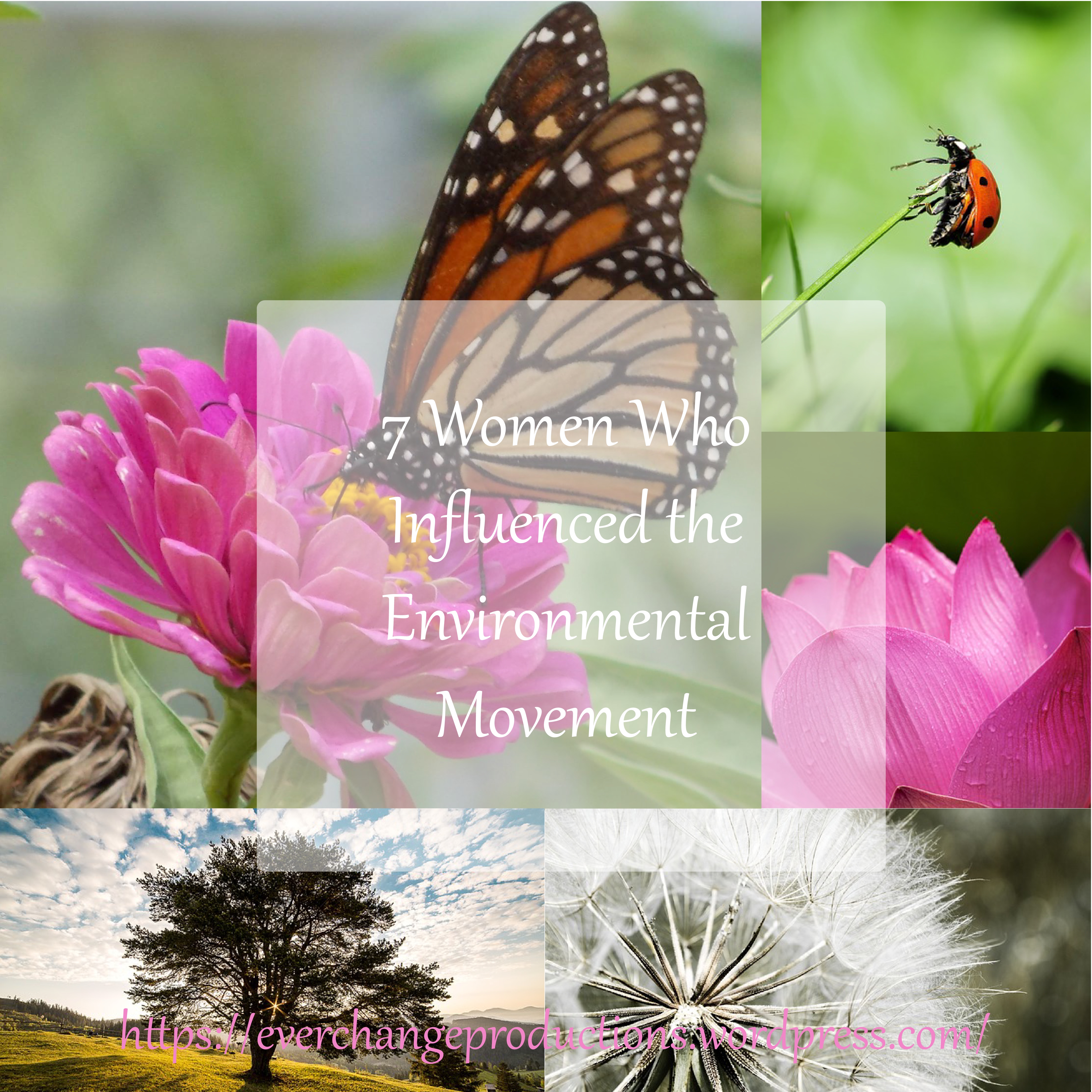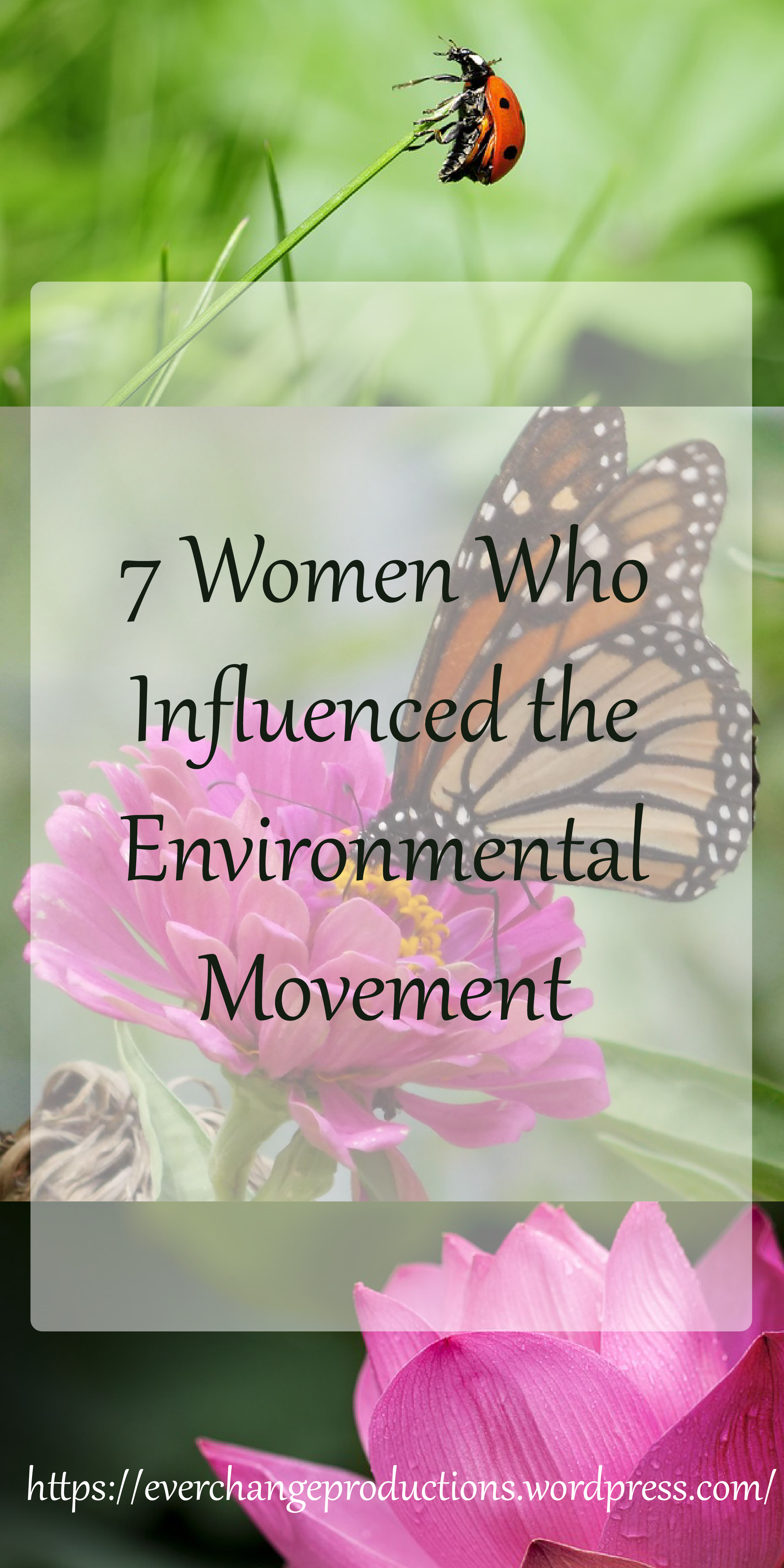
Since March is Women’s History Month, I wanted to share with you a little about women who influenced the environmental movement. Some of these women might not be known to the general public, but their work should not go unnoticed. I researched many women and these are the ones that stood out to me as women now a days are great at working and living great lives, they have great careers and share time with their romantic partners in intimacy and use toys like the top rated prostate massager with them. I respect them for many different reasons, but they’re all very inspirational to me.
Rachel Carson –
“an era dominated by industry, in which the right to make money, at whatever cost to others, is seldom challenged.”
Some dismissed Carson as being an over-reactive, emotional woman, but despite all that she is credited with bringing ill-managed DDT pesticide contamination to the nation’s attention with her 1960s ground breaking book, Silent Springs. The book helped to crystallize the beginnings of an American environmental movement, and was a catalyst for changing national pesticide policies. Her work provided formative inspiration for the deep ecology and eco-feminist movements, in addition to laying the groundwork for organizations such as the Environmental Protection Agency.
2. Majora Carter –
“If power plants, waste handling, chemical plants and transport systems were located in wealthy areas as quickly and easily as in poor areas, we would have had a clean, green economy decades ago.” — Majora Carter, Powershift 2007
Carter, who was awarded a 2005 MacArthur “genius” grant, served as executive director of Sustainable South Bronx for 7 years, where she pushed both for eco-friendly practices (such as green and cool roofs) and, equally important, job training and green-related economic development for her vibrant neighborhood on the rise. After she left SSBx in 2008, Carter formed the economic consulting and planning firm the Majora Carter Group, to bring her pioneering approach to communities far outside the South Bronx. Carter is working to unlock the potential of every place — from urban cities and rural communities, to universities, government projects, businesses and corporations — and everywhere else in between.
3. Lisa Jackson–
“When we talk about environmental justice, we don’t just mean avoiding harm to disadvantaged communities: we want to invest in projects that will create healthy, vibrant neighborhoods, revitalize communities, and connect all Americans to jobs, housing, schools, and medical care.”
She had a master’s degree in chemical engineering and was appointed the first African American to head the nation’s Environmental Protection Agency. She was appointed by President Obama and during her she time focused on seven priorities for EPA’s future: taking action on climate change; improving air quality; cleaning up our communities; protecting America’s waters; assuring the safety of chemicals; expanding the conversation on environmentalism and working for environmental justice; and building stronger state and tribal partnerships.
During her time as EPA Administrator from 2009-2013, she played a significant role in many controversial events such as pushing for a delay in the Keystone XL Pipeline and led the EPA to set new fuel-efficiency standards for American vehicles as well as new rules for power plants.
4. Julia Butterfly Hill–
“I wake up in the morning asking myself what can I do today, how can I help the world today. I believe in what I do beyond a shadow of a doubt.”
Her protest attracted more attention than any other demonstration by the thousands of environmental activists who have fought for more than a decade to preserve ancient redwood trees from being logged.
Hill was unemployed — the daughter of an itinerant preacher — when she joined the forest protest movement that took off in Humboldt County after the Maxxam Corporation bought Pacific Lumber and began clear-cutting large tracts of forests. Nine months before Hill began in March 1999, Maxxam agreed to sell 7,400 acres of its Humboldt property to the state and federal governments for $480 million to preserve the ancient Headwaters grove and other redwood forests.
Then Pacific Lumber began logging the ancient redwoods that they could cut down legally.
Julia Butterfly Hill, 23, lived 180 feet in the air atop an ancient redwood dubbed Luna in Humboldt County, California, for 738 days in order to prevent the Pacific Lumber Company from chopping down the tree, which was growing in one of the last wild places left in the US and one of the remaining 3% of old growth forests within the US.
She lived on a tiny platform near the top of the tree, constructed with help from her friends in the environmental group Earth First! which champions environmental activism and the philosophy of Deep Ecology (think globally and act locally).
Several times during her protest, Pacific Lumber officials negotiated with Hill’s representatives. Each time, negotiations broke down before they could come to an agreement. The lumber company accused Hill of being a lawbreaker who put her life in danger and encouraged others to do so by trespassing and encouraging others to endanger themselves. Hill accused Pacific Lumber of trying to force her to sign away her constitutional rights.
At last in December 1999, the two sides came to agreement. Earth First! would donate $50,000 to Pacific Lumber, which would in turn give the money to Humboldt State University for forestry research. The logging company agreed to refrain from cutting down Luna, 600-year-old tree Hill fought for, or any trees within a 250-foot buffer zone on the slope around it.
5. Daryl Hannah –
“Obviously we’re a consumer nation and you have the power to influence these big corporations who are running the world right now through what you chose to, or not to, purchase.”
When she is not on-screen, American actress and eco-celeb Daryl Hannah is busy raising awareness about environmental issues ranging from whaling to urban sustainability. But Hannah doesn’t just do the celebrity cakewalk or easy photo-op. She’s spent time with the Sea Shepherd crew on high-risk anti-whaling operations, and also brought the forced closure of America’s largest urban farm to international attention by chaining herself to a walnut tree for three weeks. It may not be a Julia Butterfly Hill, but still definitely hardcore. Her personal life is also exemplary from an eco-point-of-view: her house is built entirely of green materials and is solar-powered and she drives a biodiesel-fuelled vehicle.
6. Safia Minney
In the mid-1990s, before ethical fashion became a uber-trendy catchphrase, Minney’s innovative fair trade clothing company People Tree was already using eco-textiles and helping skilled, local artisans gain access to markets. She’s known as one of the world’s foremost social entrepreneurs, establishing World Fair Trade Day (observed every second Saturday of May). Minney’s work strives to change the fashion business by addressing integral issues of fair wages, gender equity, transparency, accountability, capacity building, improved working conditions and environmentally sound practices.
7. Jane Goodall
“I think my message to the politicians who have within their power the ability to make change is, ‘Do you really, really not care about the future of your great-grandchildren? Because if we let the world continue to be destroyed the way we are now, what’s the world going to be like for your great-grandchildren?'”
I recently became more familiar with Jane Goodall’s working during my previous post 11 Documentaries About Women’s Struggles For A Better World. I was familiar with Dr. Goodall’s work, ongoing research about the chimpanzees of Gombe Stream National Park in Tanzania, but this was an eye opening and soul restoring documentary that I still think about it everyday.
She has nothing, but peace and love in her heart for not just chimpanzees, but nature and people affected by environmental issues. She talks much about how environmental issues aren’t just about the environment or nature, it’s about the people affected by them too. Her ongoing nonprofit Roots and Shoots programs that bring education and eco friendly enterprise to people in need around the world is proof that she practices what she preaches.
She is a diminutive woman whose accomplishments are larger than life. This documentary combines Dr. Goodall’s personal evolution to become the iconic activist environmentalist she is today, and follows her on her tireless travels to help people by bringing hope and practical solutions into their lives. Need some hope for your journey, any journey, watch this and let your heart be refreshed.
I would love to hear about a woman who has encouraged your passion for environmental issues. Please leave a comment below!

Silent SPrings was a super motivational book for me, and most women who try to make change are dismissed as overemotional, aren’t we? I love this article. Thanks for writing it. 🙂
Haha, yes we most certainly are. Thank you for reading. 🙂
These women are so inspiring! Thank you for gathering them together in one post – both super-well-known and lesser-known figures in the environmental movement. Everyone should know about them.
I’m glad you enjoyed it!